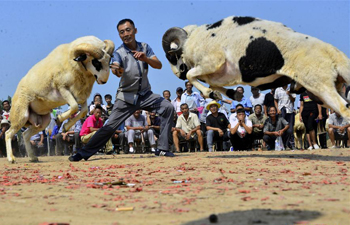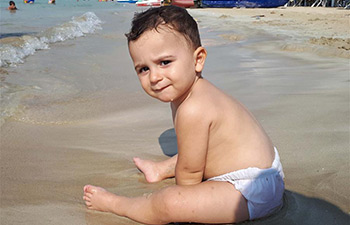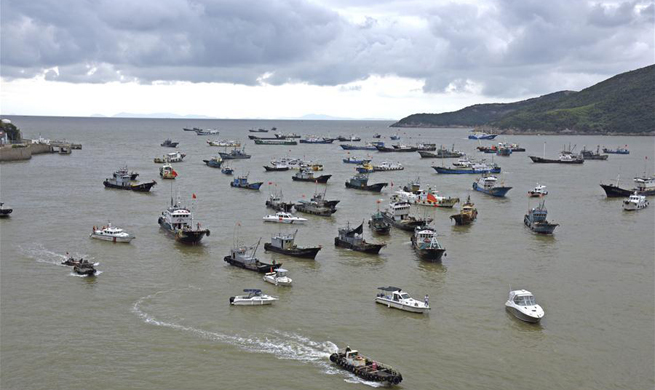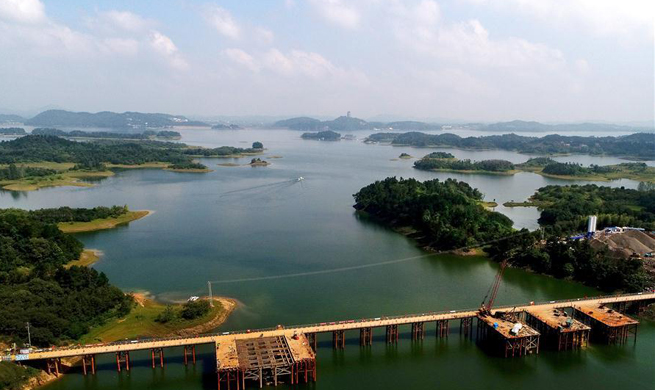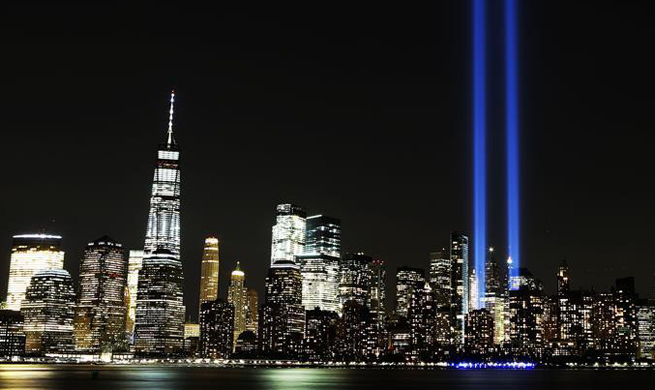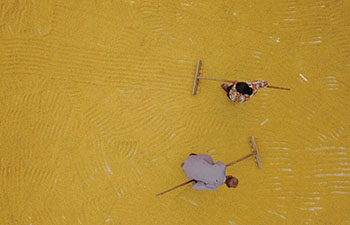By Raimundo Urrechaga
HAVANA, Sept. 12 (Xinhua) -- Furniture, mattresses, chairs and cushions etc. are laid out on the streets to dry in various coastal locations of the Cuban capital these days.
Following Hurricane Irma's path through Cuba, which left severe damages to the country's tourist infrastructure as well as floods in Havana and other regions, Cubans are actively trying to recover and return to a normal life.
Along the famous Malecon seafront avenue, damages to houses and tourist facilities are numerous and residents of the area said the night Irma passed near Havana's coast will never be forgotten.
"The waves in this part of the coast reached up to 10 meters high. I live on the second floor and, even at that height, my home got flooded. We had never really experienced anything like this," Fidel Manrique, a resident of central Havana, told Xinhua.
This part of the Cuban capital, considered the most densely populated part of the country, saw old buildings collapse as floods reached 300 meters inland and the strong winds wrought considerable damage.
"We had a great flood from the Malecon, partial collapses of homes and broken windows and doors," Roberto Fonseca, a resident of the area, told Xinhua.
The Cuban capital saw more than 100,000 people evacuated, including Elizabeth Garcia, a 25-year-old teacher, who has spent the last few days with her mother in a shelter.
After returning to her home in central Havana, she found that her furniture and household appliances had been washed away.
"We have lost everything in our house as have our neighbors, but the most important thing is that we are alive," García said.
Irma left at least 10 dead in Cuba, according to a report by the island's Civil Defense published on Monday.
The deceased were in the central and western provinces of Havana, Matanzas, Camaguey and Ciego de Ávila.
As the floodwaters receded, a recovery phase has been declared in 13 of Cuba's 15 provinces.
Workers from local power company and communal services worked hard to remove downed poles and power lines, as well as trees and branches.
All components of the Revolutionary Armed Forces (FAR), including students from military universities, also contributed to the clean up.
"Members of the FAR are supporting all the recovery and cleaning up duties in the city, for no matter how many days we have to be here," Nigdalys Orta, a young military official, told Xinhua.
Most parts of the country, including Havana, remains without electricity, however.
According to the technical director of the Electricity Union of Cuba, Lazaro Guerra, the island's electrical system was seriously damaged.
"The hurricane caused a loss of electricity generation, the destabilization of the national electricity system and its total collapse," Guerra told local media.
On Tuesday, flights were restored at international airports including in Havana and Varadero.
Irma's full impact on Cuban tourism has not been assessed yet, but tourist resorts along the northern coast have suffered serious damage, meaning the country's second-largest source of foreign revenue will be severely affected.
Minister of Tourism Manuel Marrero told local media that despite the hurricane, the country will be ready for the tourist high season beginning in November.
More than 10,000 tourists were evacuated during the storm from tourist resorts and relocated in Havana and Varadero, a city about 120 kilometers east of the capital.
Cuba's health authorities are also racing to prevent any epidemics from appearing in the wake of Irma.
Yanaris Lopez, director of environmental health at the Ministry of Public Health, said in a statement that prevention efforts are an absolute priority.
She noted that efforts are being taken to prevent disease from spreading through contaminated water or spoiled foodstuffs.




